The State of SanDisk
by Kristian Vättö on December 5, 2014 8:00 AM EST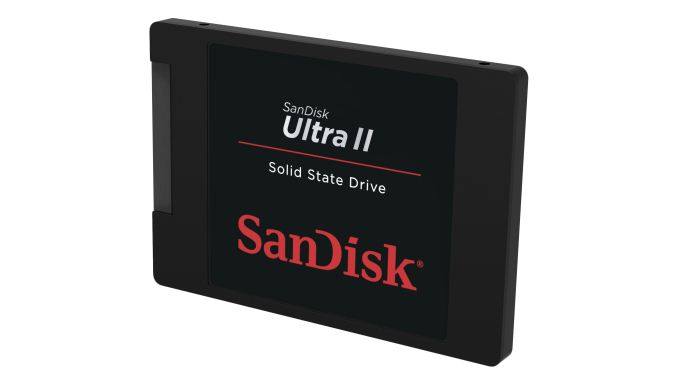
Back at Flash Memory Summit I had the opportunity to meet with all the key people at SanDisk. There is a lot going on at SanDisk at the moment with the Fusion-io acquisition, TLC NAND, and other things, so I figured I would write a piece that outlines SanDisk's current situation and what they're planning for the future.
I'll start with the client side. For SanDisk the big topic at this year's Flash Memory Summit was TLC NAND and we were given a sneak peek of the SanDisk Ultra II back at the show, which was then released a few weeks later. Since we have already reviewed the Ultra II, I'm not going to talk about the drive itself and its technical merits, but there are a few things that Kevin Conley, senior vice president and general manager for SanDisk's client business brought up about TLC and the client market in general.
I'm sure most of our long-time readers remember how SSD prices plummeted between 2010 and 2012. The reason for that wasn't a breakthrough in NAND technology, but merely the fact that all manufacturers increased their manufacturing capacity with the expectation of exponential NAND demand growth. As you can see in the graph above, the industry bit growth was over 60% year-over-year between 2010 and 2012, which lead to oversupply in the market and deflated the prices.
The reason why all NAND manufacturers invested so heavily on capacity increases was the popularity of smartphones and tablets; it was expected that the average storage capacity would increase over time. Basically, the NAND manufacturers assumed that decreases in NAND prices due to smaller lithographies would translate to higher capacity smartphones and tablets, but in fact the mobile companies chose to save on onboard storage and invest in other components instead (camera, SoC, etc.).
It's only been recently that smartphone and tablet manufacturers have started to increase the internal NAND and offer higher capacity models (e.g. the 128GB iPhone 6/6+), but even today the majority of devices are shipping with 16GB, which is the same capacity that the low-end iPhone 3GS had when it was introduced in 2009. Of course a large reason for the reduced sales of higher capacity smartphones/tablets has a lot to do with pricing, where 32GB devices often cost $100 more than the 16GB model.
Since the NAND manufacturers are now adding fab space at a slower pace, they are looking for alternate ways to increase bit growth and scale costs down – and that's where TLC kicks in. Because TLC packs in 50% more bits than MLC (three bits per cell instead of two), increasing the share of TLC production is an efficient way to boost bit growth without additional fab investments.
Currently about 45-50% of SanDisk's NAND production is TLC and by next year TLC will be overtaking MLC in terms of production volume. Note that SanDisk will have 3D NAND ready in 2016, so the graph doesn't imply that SanDisk will move to TLC-only production in 2017 – it is just the 2D NAND production moving to TLC since it will mostly be used in applications like USB flash drives and other low cost devices, while 3D NAND will be used in SSDs.
TLC will also be one of the driving forces behind average capacity increase. The main obstacle in SSD adoption is obviously the cost per gigabyte, and the lower production costs of TLC will help to bring the prices down. I think it's too early to say what kind of impact TLC will have on prices because currently there are only two drives available (SanDisk's Ultra II and Samsung's 840 EVO), but once more OEMs are ready with their TLC SSDs later this year and early next year, I believe we will see more aggressive pricing.
One of SanDisk's presentations at the show had a very interesting slide about the company's internal SSD deployment program. The question that is often debated when it comes to SSD endurance is the number of gigabytes that a user writes per day. There aren't really any studies with large sample sizes, but SanDisk's own study provides an interesting insight into typical office workloads.
What the data shows is that a typical office user only writes about 7GB per day on average and the number of people that write over 20GB is only a few percent, so very few users actually need more endurance than what TLC SSDs can offer (~20GB/day). Of course, everyone's usage is different and I doubt SanDisk's data takes e.g. media professionals properly into account, but it is still interesting and valuable data nonetheless.
Another thing I discussed with SanDisk was the obstacles for higher SSD adoption rate. While there is growth, the attach rate in the consumer space is still fairly modest and will remain as such for the next few years at least. Price is obviously one of the most important factors as hard drives are still an order of magnitude cheaper when measured in price per gigabyte, but I'm not sure if absolute price and capacity are the only hurdles anymore. I mean, 256GB is more than sufficient for the majority of users – especially now that we live in the era of Netflix and Spotify – and at ~$100 it's fairly affordable, so I think we have reached a point where the price is no longer the barrier preventing users from upgrading to SSDs.
This is actually the part where we ask for your, our readers, help. What is it that we or manufacturers like SanDisk could do to boost the SSD penetration in the market? Would live demonstrations at malls and other public places help? Or upgrade programs where you could take your PC to a store and they would do the upgrade there for you? Let us know your ideas in the comment section below and I'll make sure to bring them up with SanDisk and other SSD manufacturers. Remember that we are talking about the masses here, so think about your parents for instance – what would it take for them or other people who are not very comfortable around computers to upgrade their PCs with an SSD?
The one huge problem is of course the PC OEMs and convincing them to adopt SSDs for mainstream laptops. The race to the bottom practically killed the profits in the PC industry, which is why most of the mainstream (~$400-600) laptops have such a bad user experience (low-res TN panels, cheap plastic chassis, etc...). With already razor thin margins, the OEMs are very hesitant about increasing the BOMs and taking the risk of cutting their already-near-zero margins with SSDs. I know SanDisk and other SSD OEMs have tried to lobby SSDs to the PC OEMs as much as possible, but anything that adds cost gets a highly negative response from the PC OEMs.


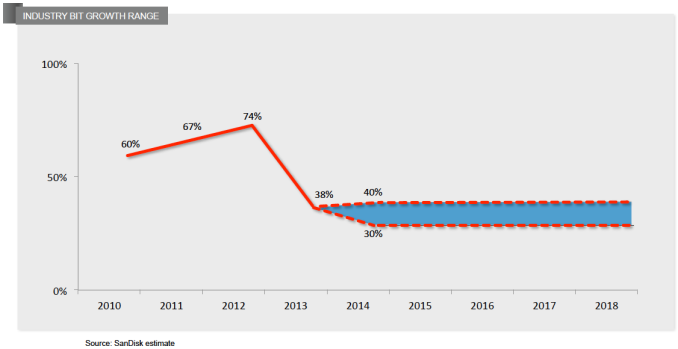
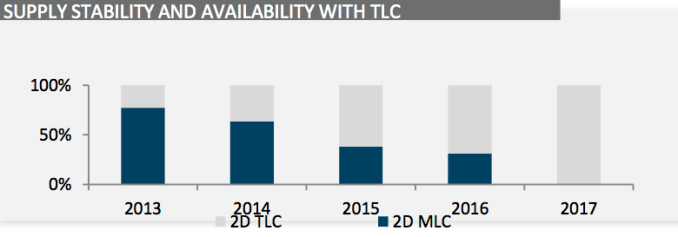
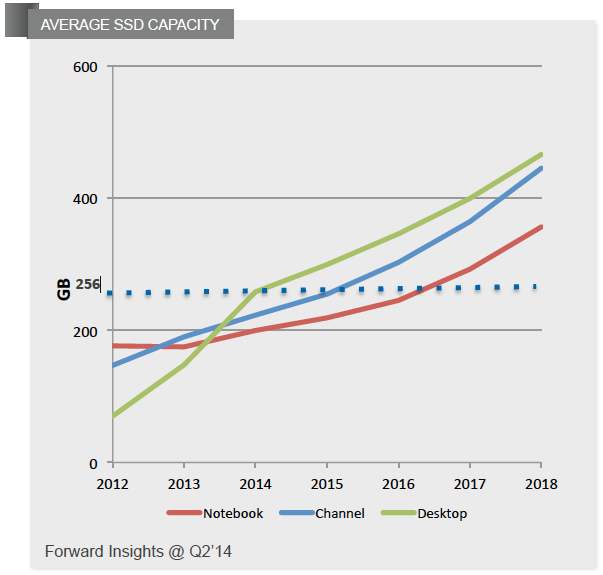
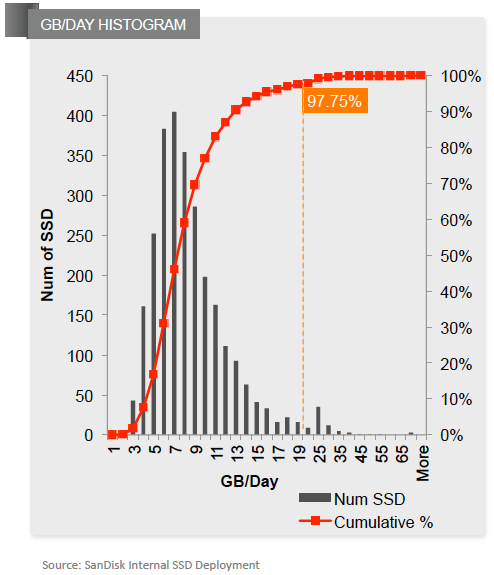









132 Comments
View All Comments
Icehawk - Friday, December 5, 2014 - link
The big OEMS don't even offer SSDs on their desktops below ~$2k in my recent experience trying to help a friend out - or if they do it is at an insane markup (like 128gb for +$300).I have a friend, Unix admin for 15yrs, a super nerd... and he is still afraid of SSDs dying like the first ones he had 5 years ago.
Hard to convince non-techies that the key to unlocking performance is using an SSD since traditionally all they think about is the CPU. Did my mom buy an SSD equipped laptop after I explained the new one she was looking at would basically perform exactly like her old one? Nope.
NatePo717 - Friday, December 5, 2014 - link
2TB+ SATA SSDs at reasonable prices. Need solid state at high capacity.PPalmgren - Friday, December 5, 2014 - link
Just another thought, maybe the consumer OEMs like Dell are at odds with SSDs because of the massive increase in product longeivty they cause. The #1 thing making a computer feel 'slow' after a few years, especially cheapo laptops, is crappy hard drives burdened with too much cruft. The hard drive is also the part in a computer with the highest failure rate and the lowest life span. Maybe the SSD manufacturers and the OEMs are at an impasse, well, until one of them disrupts the market. I think when/if that happens, it will play similarly to the way T-Mobile destroyed cell phone contract prices.mickulty - Friday, December 5, 2014 - link
>What is it that we or manufacturers like SanDisk could do to boost the SSD penetration in the market?Cheaper SSDs. If an SSD could be used for the same cost as a basic hard drive, it would be much more attractive to OEMs. This might mean simpler, cheaper controllers as well as an effort to drop nand prices and the use of less nand dies - the performance would take a hit, but could still be more than a mechanical drive. Right now 64GB ssds are still around £5 more expensive than 320GB 2.5" hard drives at retail.
Also, personally I'd be tempted by decent cross-platform caching software.
zodiacfml - Friday, December 5, 2014 - link
Problem with the OEMs. They intentionally left SSD only as an option instead of a default because the computing device would perform well for years, making the upgrade cycle longer.To solve it, the consumers has to specifically look for devices with SSDs before OEMs scramble to place SSDs as the default on their products.
But, how do you educate the consumers now that they spend more time on a phone or tablet instead of an x86 machine? I saw Samsung a few years ago giving effort to educate consumers with the benefits of an SSD and yet the adoption rate still remains very slow.
Even the company I work for does not have an idea of SSDs. They still kept on buying new machines which are pretty much overkill for 99.9% of their use. An SSD will help will greatly with Windows updates which is a pain for everyone in the company and my job to deploy applications and maintenance.
Sushisamurai - Friday, December 5, 2014 - link
From my personal experience and my parents, I think SSD's have a few hurdles before they become mainstream. We're fairly tech savvy, but even for myself, I only put in an SSD on my new built system (2013; 128GB OS drive), but everything else is still on a HDD.Even at the time, not seeing any SSD's in action, I merely had an extra $300 to see what the hype was all about. Do I regret my purchase? No. Do I think it was necessary? Not at all.
1) I think the main issue is OEM market penetration. I've grown up with multiple systems all HDD based, even my 2011 laptop is HDD based. My family and I are so use to 1-3 minute boot times that a 10 second boot time is just an unnecessary luxury (but yes, launchin applications is faster) - we keep 3 of our desktops running 24/7, so boot times is essentially non-existent.
2) price. i wouldn't mind swapping my Ivy bridge laptop HDD for an SSD, but I've grown rather accustomed to my 750GB storage. Spending an additional $300-400 for a 512GB SSD seems unnecessary - I might as well save that money for a new laptop that comes with an SSD when this one dies.
3) Demos are needed. If consumers can't see real life examples of an SSD and HDD side by side doing the same thing. People won't be convinced. I certainly wasn't prior to buying one. It's almost like an ios vs android issue. Simplified interface of iOS won the masses initially compared to android, and now it's a price war.
Sushisamurai - Friday, December 5, 2014 - link
3.5) this is more of an after thought, but I think apple's going to have an edge for the next few years in terms of laptop sales. Most of their laptops are all on SSD's, increasing speed of responsiveness. Theyre on PCIe SSD's, a fact u don't see heavily marketed by Apple. The common person is going to use their laptops, and realize how snappy it is without knowing why, attributing the difference to apple/OS and not the SSD.They also don't offer an HDD to SSD upgrade option, instead the cost is "bundled". Smart marketing move, higher margin/priced laptops, with the consumer not really knowing the cost of parts (eg: adding $200-300 for an SSD in a laptop, would mean that SSD costs $200-300 - consumer would shop elsewhere for an SSD, probably not buy it due to the hassle or install/switch)
Klug4Pres - Friday, December 5, 2014 - link
Confession: I only own one SSD, which is a 120GB boot drive (a Sandisk!) in my HTPC. For that specific application, I could see that a snappy response was helpful and perhaps key to spousal adoption.For my main laptop, I use an old Thinkpad with a 4:3 screen (T60, SXGA+), and I know an SSD would help a lot, but I still won't spend the money. I'd like at least 240GB, and I'd stick a big hard drive in the second spindle. Maybe when I can pick one up for £50 in the UK. Cheapest I have seen so far, for periods of about 10 minutes on Amazon, is £65 for a Crucial, was it M500 or MX100, I don't recall.
Don't fancy TLC either, or tiny lithography. An end-of-line M500 is what I am hoping for.
Runamok81 - Friday, December 5, 2014 - link
Sandisk, please quit focusing on how to penetrate the broader consumer market. Focus on your core market, the enthusiasts. The 21% market share you have represents people that can do the data transfer and hardware upgrade themselves. And we're saturated. We've had SSDs commercially available for five years. And now that 128GB and 256GB are more palatable for the thriftier geeks, you can bet your mechanical keyboard we have an SSD in every device. Until you can scale operations -and SSD prices- into a true price-parity with HDDs, then OEMs will be unable to afford integrating these -relatively speaking- expensive SDDs into the lower levels of their product stack, and that untapped 79% will remain so. Why isn't SanDisk courting the margins of their captured market? SanDisk makes fantastic products. Among enthusiasts they have name recognition, reputation and brand loyalty. We will buy new SSDs, but we need a reason to replace our 3-year old SanDisk SSDs. If we can't have size, then we want SPEED! We like you, but where are your ultra-fast PCIe SSDs? We will upgrade for that. We might even pay a nice premium. Mom and Pop? Not so much. And these "market penetration" suggestions... a consumer education campaign? Good luck. A "geek squad" like HDD to SSD data transfer service? Ill-advised. What wet-behind-the-ears marketeer concluded that process wouldn't be a logistical and liability nightmare. As for Anandtech, slow news day? I enjoy market analysis, but acting as the mouthpiece for the SanDisk marketing department by trolling your visitors for "market penetration" ideas is a new low. Get back on track.
Kristian Vättö - Friday, December 5, 2014 - link
SanDisk sponsored my trip to FMS and in return we agreed to do an article about what SanDisk presented and showcased at the event. AnandTech doesn't cover international flights, so finding a sponsor was the only way I could attend the show. Note that this is the case with every trade show and is thus nothing new or out of the ordinary.However, SanDisk wasn't involved in the editorial process at all. The only condition they had is that the article needs to be linked to FMS and the meetings/presentations at the show, so I decided to write about TLC NAND and the Fusion-io acquisition as both are big things for SanDisk and the market in general, and one of SanDisk's presentation had interesting data about TLC as shown in the graphs in the article.
We also talked about SSD adoption for a lengthy period of time and I thought it makes sense to reach out to you, our readers, for input. SanDisk did not request or demand this -- it was all my idea. SSD is without a doubt the biggest upgrade that can be made to improve user experience and I'm genuinely interested in what can be done to increase the adoption rate. It's not for the marketing departments, but for all the people that could have better user experience if they knew about SSDs. I also think it's an excellent opportunity for you to be heard and there already great comments, which I'll definitely bring up when I meet with the companies at CES.
I hope this explains the situation. I'd like to emphasize that we are and will continue to be editorially independent and the purpose of sponsorships is to provide you with better content, for which attending trade shows and building relationships is crucial.